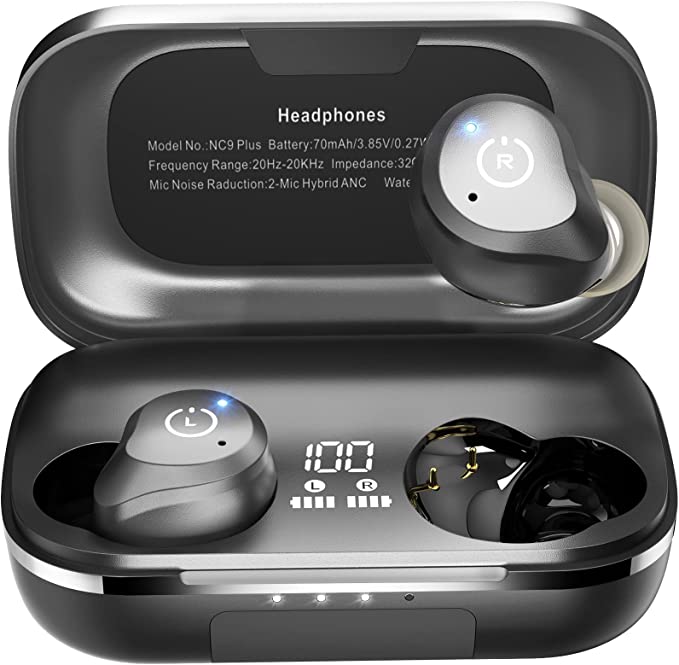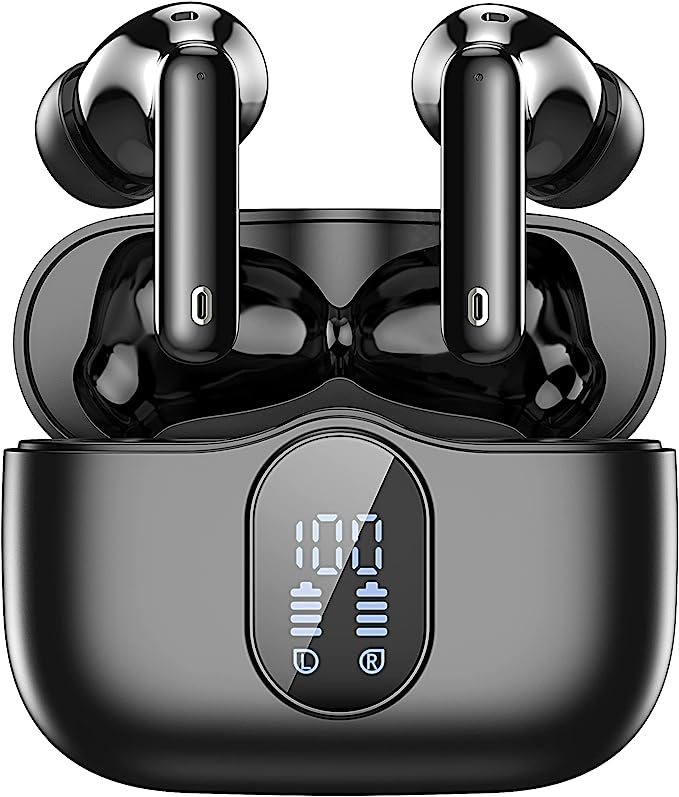Not All Noise Cancellation Is Equal: A Guide to Hybrid and Adaptive ANC
Update on Nov. 14, 2025, 8:45 p.m.
In the modern world, silence has become a precious commodity. We seek refuge from the roar of public transit, the chatter of open-plan offices, and the general din of daily life. Active Noise Cancellation (ANC) technology has emerged as our most powerful tool in this quest for quiet. But as the market floods with headphones all claiming “noise cancellation,” a crucial question arises: why do some work so much better than others?
The answer lies in the fact that not all ANC is created equal. The effectiveness of a pair of earbuds to create your personal bubble of tranquility depends entirely on the sophistication of its engineering. Let’s decode the hierarchy of noise cancellation—from basic to brilliant—and uncover why a specific technology called Hybrid ANC is the new gold standard for those seeking affordable, high-performance quiet.

The Science of Silence: A Quick Refresher
At its core, all ANC works on a magical principle of physics called destructive interference. An external microphone captures ambient noise (a sound wave), and a processor instantly creates a mirror-image sound wave (an “anti-noise” signal). When these two waves meet, they cancel each other out, drastically reducing what you hear. The difference in performance comes from where and how the system listens.
Level 1: Feedforward ANC (The Sentinel)
The most basic form of ANC uses a feedforward microphone placed on the outside of the earbud. * How it works: Think of it as a sentinel on a castle wall. It spots the enemy (noise) approaching from a distance and prepares a defense. * Strengths: It’s effective at reducing a narrow band of low-frequency, constant noises like the drone of an airplane engine. * Weaknesses: It can’t hear what’s happening inside the castle—it doesn’t know what sound is actually reaching your ear. This means it can’t self-correct and can be less effective against more complex, unpredictable sounds.
Level 2: Feedback ANC (The Internal Guard)
A more advanced system uses a feedback microphone placed on the inside of the earcup, between the speaker and your ear. * How it works: This is like an internal guard patrolling inside the castle. It listens to the sound exactly as you’re hearing it and reacts to any noise that has breached the defenses. * Strengths: It can adapt to variations in fit and is very effective at cleaning up noise in a broader frequency range. * Weaknesses: It can be susceptible to feedback loops and sometimes struggles to react quickly enough to very sudden, sharp noises.

Level 3: Hybrid ANC (The Complete Defense System)
This brings us to the gold standard. Hybrid Active Noise Cancellation doesn’t choose between the two methods; it combines them. It uses both an external feedforward microphone and an internal feedback microphone. * How it works: You now have the complete defense system—sentinels on the outside and guards on the inside. The external mic provides the first line of defense, while the internal mic provides real-time quality control, catching anything the first line missed. * Strengths: This dual-microphone approach allows the processor to attack noise from two angles, resulting in a much deeper, broader, and more accurate level of noise cancellation across a wide spectrum of sounds.
For years, the cost and complexity of Hybrid ANC confined it to premium, high-priced headphones. The true revolution in today’s market is the democratization of this technology. Products like the Xiaomi Redmi Buds 4 are now bringing Hybrid ANC to a remarkably accessible price point, allowing a wider audience to experience a superior level of quiet.
The Brains of the Operation: Adaptive ANC and AI
Top-tier noise cancellation isn’t just about hardware; it’s about intelligence. The Redmi Buds 4 layer an Adaptive ANC mode on top of their hybrid system. This is where an AI algorithm acts as the “commander” of your defense system.
Instead of having one static level of noise cancellation, the earbuds intelligently judge the ambient noise levels of your environment.
* On a loud metro or airplane? The system will automatically switch to “Deep mode” for maximum noise cancellation (up to 35dB).
* In a relatively quiet coffee shop? It might select “Balanced mode” to handle general chatter.
* In a library or office? It can switch to “Light mode,” reducing minor noises without creating a feeling of excessive pressure.
This intelligent adaptation not only provides a more comfortable and tailored listening experience but also optimizes power consumption, helping to achieve a long battery life of up to 30 hours with the case.

The Necessary Counterpart: Transparency Mode
Of course, sometimes you need to let the world back in. Dual Transparency Mode is the essential counterpart to powerful ANC. With a long-press, you can instantly switch from isolation to awareness, allowing you to hear announcements or have a quick conversation without removing your earbuds. An “enhance voice mode” can even be set to specifically amplify human speech, making communication feel natural.
Conclusion: From Noise to Nuance
The leap from basic noise reduction to intelligent, Hybrid Active Noise Cancellation is one of the most significant advancements in personal audio. It transforms headphones from simple speakers into sophisticated environmental managers.
Understanding the difference between Feedforward, Feedback, and Hybrid systems empowers you to look beyond the generic “ANC” label on a box. It allows you to identify the technology that delivers a truly superior level of quiet. The exciting news is that this once-exclusive technology is no longer out of reach. As brands continue to innovate, the barrier to entry for a high-quality, peaceful listening experience is falling, giving everyone the power to turn down the volume of the world and focus on the sounds that truly matter.

























































